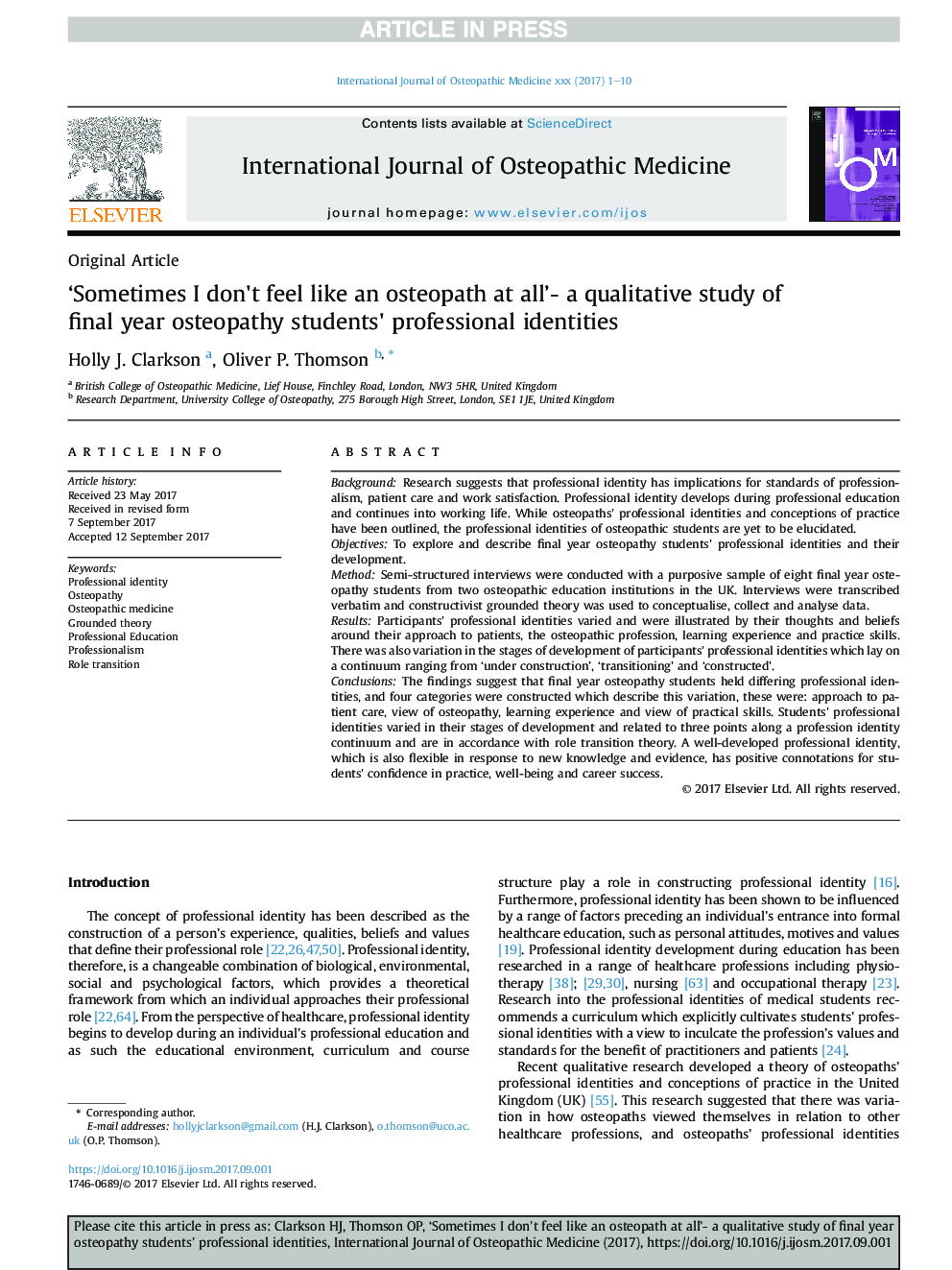| Article ID | Journal | Published Year | Pages | File Type |
|---|---|---|---|---|
| 8558909 | International Journal of Osteopathic Medicine | 2017 | 10 Pages |
Abstract
The findings suggest that final year osteopathy students held differing professional identities, and four categories were constructed which describe this variation, these were: approach to patient care, view of osteopathy, learning experience and view of practical skills. Students' professional identities varied in their stages of development and related to three points along a profession identity continuum and are in accordance with role transition theory. A well-developed professional identity, which is also flexible in response to new knowledge and evidence, has positive connotations for students' confidence in practice, well-being and career success.
Keywords
Related Topics
Health Sciences
Medicine and Dentistry
Complementary and Alternative Medicine
Authors
Holly J. Clarkson, Oliver P. Thomson,
